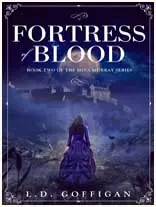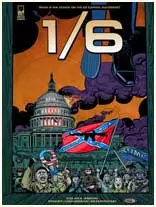How to Write a Self-Help Book

Do you think this is the perfect time for you to come up with a self-help book? Great idea! Self-help is one of the most selling subgenres and most profitable to write. If you have ever wanted to come forward and tell people about your story of overcoming some struggle, if you have a message about relationships or professions that you wish to convey, or if you want to assist people in bettering specific aspects of their lives, then writing a self-help book will enable you to make a difference and create a niche for yourself in the process.
However, one will likely encounter several challenges when writing a self-help book. It is a protracted process that requires a lot of information and experience, coupled with strong and steady work. Below is a comprehensive guide to help you with all these steps, from developing a great concept to formatting your manuscript for publication. Let us get started!
Step 1: Determining the focus area and intended market for your services
As mentioned earlier, the self-help category is rather diverse; it can include books on physical and mental health, family and romantic relationships, self-actualisation, faith, work, substance abuse, and many others. In defining your book, you must identify your targeted category and the reader you wish to appeal to. Ask yourself:
• What specific issues must I address to help people improve their lives? Select one of the central messages on which to focus the book's content.
• It might sound obvious, but who needs this advice the most? Know who belongs to your target audience. A clear idea is always good, but make it as specific as possible.
• Why would people trust me for advice on this topic? It would be best to lay your authority so that readers see you as someone who can be trusted to give advice.
If you have this in mind, it is easier to establish these factors early enough to ensure that your books are clear and valuable.
Step 2: Secret of the Concept and Writing Plan
And so comes the big idea. Choosing an engaging hook, a vivid title, and an eye-catching subtitle is crucial when deciding on a title.
Second, create an outline of your book to get an idea of the whole plot and everything that happens in your narrative. Outlining is essential because it is a way of ensuring that the flow of your work remains within the right direction whenever you are writing a technical piece, especially software documentation; it is essential that the main aim is to provide solutions. Structure it something like this: Structure it something like this:
Introduction
- Attention-grabbing opening
- Brief description of the core of the difficulty you are addressing
- Typically, credentials prove you are an expert.
- Ostensible plan of action for the rest of the book
Chapter 1:
- Problem background and description of the OR and its symptoms
- Examples of particular narratives showing the real-world effects
- Statistics illustrating why required solutions are provided to support the presented claims.
Chapter 2:
- I have chosen to present the solution and the main message in the last part of the presentation since it is the final part to deliver, and it has to be powerful enough to make the audience take action.
- Step-by-step instructions
- Aims for advice, resources, and models as practical recommendations
Chapter 3 and beyond:
- Extra help, presented in a sequenced manner
- Overcoming obstacles/advanced techniques
- Algorithms for responding to ‘What if…?’ propositions
Conclusion
- Main ideas and recommendations
- Testimonial of other successful individuals who have embraced your program
- Motivational call-to-action statements
This gives you a detailed plan to follow as you work on your work from this point onwards.
Step 3: Write with Authenticity and Offer Valuable Information
Finally, let the creativity begin: writing! Once you have identified your area of specialisation, your target group, and the structure of your book, it is time to ensure that every page offers much value. Fill your manuscript with the following:
- Fact that you gained from your experience completing or addressing a problem
- logically give instructions and provide reasons for such instructions and directions.
- Stories for motivation, examples, and appeal to the audience.
- Encouraging words when we are in times of trial
- Another critical component is meaningful comparisons and metaphors regarding the major advice pieces.
Remember to write as if you are having a natural, friendly conversation using your feelings and emotions. Please do not use too formal language; do not make it look like an example of an academic text. Write each chapter as if you are telling it to the audience in their time of helplessness and personal experience. Sprinkle in humour! Moreover, finally, throw in a pinch of character! These feelings will make your advice acceptable, and this is what will make people consider your advice.
The best approach is to use persuasive language to inform, motivate, and transform your readers into better people. Extend this value as much as possible; you will make a difference in people’s lives through your words.
Step 4: Spending Time Editing and Revising the Manuscript
It is time to write as many words as possible – tens of thousands are now on the paper. Congrats! Now follows several cycles of intense editing and final proofreading of the content. Be very critical of yourself; do not assume you are right in every decision. Polish your work by:
- Delete content that might be informative but is not needed to support the thesis of the paper or the speaker.
- Ensuring that points discussed are linked appropriately from one point to the next
- Identifying the text sections that may confuse or, on the contrary, give the reader a foggy vision of the material
- To erase any errors, including grammatical, spelling or punctuation.
- To ensure smooth flow and consistency of the reading chapters, chapters are read aloud.
Do not be afraid to be ruthless when editing if you have produced more than you need. It is also essential to understand that the length of the material does not necessarily have to correlate to the quality of the material. Nothing can be in a story for the heck of it; otherwise, it will be edited and given to readers to read. Please do not attempt to make your manuscript longer than it should be by increasing the number of pages. Any reader can tell that from a mile away. Indeed, witness how it leaps out at you:
Once you have considered all these factors, the next step is to contact a publisher.
Your manuscript is perfect for me, and I am sure it meets your high expectations. Now it is go time! You have a few options for getting that baby out into the world: You have a few options for getting that baby out into the world:
- Traditional Publishing Route
- Independent Publishing
- Hybrid Approach
Regardless of the option you wish to pursue, the critical message is that consistent effort is ultimately rewarded. Continue marketing and searching for the right publisher for your book until you sign a book deal or choose to publish your book on your own. And then prepare for the incredible sight of witnessing the change that your words bring into people’s lives.
The Key to Success is passion and, most importantly, patience.
Hurray! Now, you have the complete guide and detailed procedure on how you may write your self-help book from the start! Even the simplest tasks require a significant commitment of several months (or years) to accomplish. Still, you can do it!
If that is one area you believe you can only write about, then that passion will help you get through the tough times every writer encounters. Endeavour, even at times of self-doubt, writer’s block, rejection letters, and any other barriers that you will encounter. Never lose sight of the goal of giving information that will transform people’s lives—it will be a worthwhile endeavor.
The world requires more positive people who are willing to help empower fellow human beings. Well, my friend, that begins on the page, as far as law practice is concerned. So boot up your computer, poke around in that well of yours, and start typing words with a difference!
You have got this!
limited Time offer
- 00
- 00
- 2





